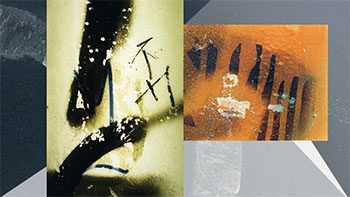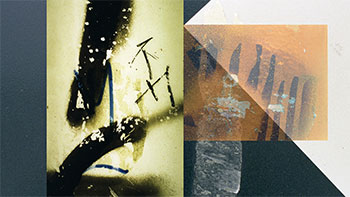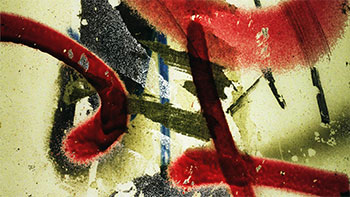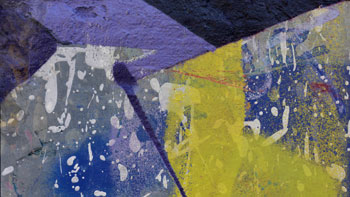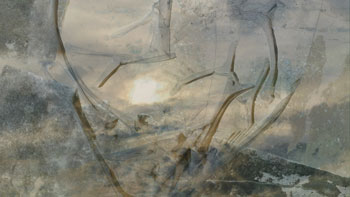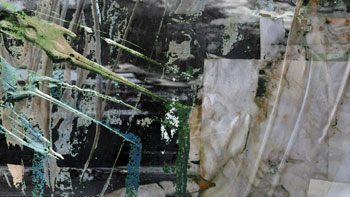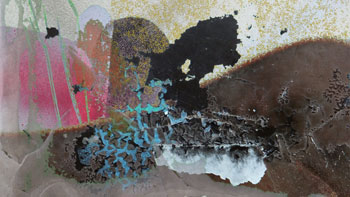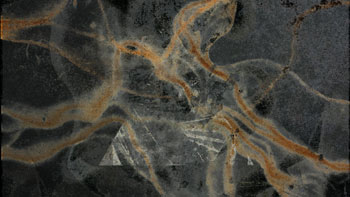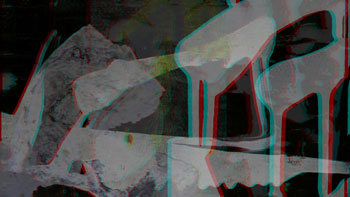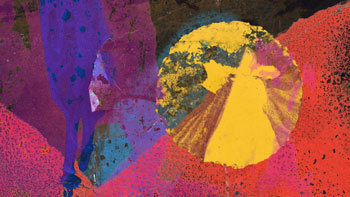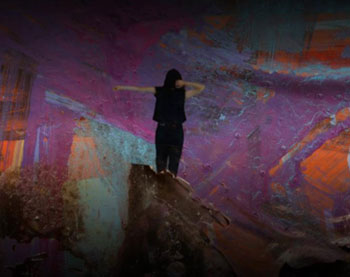andrea gregori
photography
Starting point of the project has been the above picture, obtained by patching 20 variations of the same scene, the photo of a sea landscape, altered in colours. Once per column the scene appears with the original colours. At the time of shooting the photo, I also took a movie of the same scene.
I decided then to add motion to the picture and produce a high-definition movie, obtained in a similar way from the filmed scene, to be projected on a large HD screen or viewed on a HD TV. The appearance of each block changes independently during time.
Mare
Touching the Wall
At the origin of this project there is "Clavicle", a piece for clavichord written by the british composer Julia Usher in 2004. It is an experimental music which makes use of the sounds it is possible to produce with a fretted clavichord, by either touching the keys or direct acting on the strings. Fascinated by this music, I took as a challenge assigning a synchronised sequence of photos to these sounds, producing thereby my own "interpretation" of the score, both at the musical and visual level. The work found the enthousiastic appreciation of the composer, and we agreed to make the two works to converge into a single one, "TOUCHING THE WALL". The visuals are not a parallel track, but intimately connected with the music, its timing, and spacing, and colouring. The music is not a mere soundtrack for the images; they are indivisible.
This movie is available on DVD
L'Oscuro
Tiento (3D video)
This video explores the interplay between static images flowing the one into the other through fadings and superpositions, and the flow of mental images recalled by a poetry, "l'oscuro" (the darkness) by Elisabetta Abbondanza.
An ancient music, a "tiento" by the spanish renaissance composer A. Cabezon, which I play on the clavichord, serves as storyboard for a flow of abstract images superposing in 3D. The result is a virtual "living sculpture".
Passagagli
Musical and visual interpretation of a passacaglia by the baroque composer Bernardo Storace. I play the music on a copy of a baroque harpsichord from the same city and period of the music. The visual commentary is built out of a series of fragments extracted from "abstract" photographs of my own. It follows the structure of the music, a sequence of variations on a repeated ground, divided in six sections ("partite"). Each section has its own musical character, and consequently its visual "colour", while the whole piece, both musically and visually evolves in an almost imperceptible but relentless emotional crescendo that ends up hypnotizing the viewer.
AMUSESSPACE consists of three short 3D videos about the interplay of music and vision, and the science behind them. Music serves not just as accompaniment but as the ground on which the visuals are constructed. The aim is to give to the musical ideas a visual dimension that “projects the musical structures into space”. The viewer is brought to an enhanced listening experience, going from modal to tonal and atonal music and involving the micro-tonal nuances of non-equal musical temperaments. At the same time he/she is also challenged in his/her visual perception by being immersed in an unrealistic space of pure fantasy, obtained through the abolishment of any reference to recognizable spatial coordinates. Three-dimensionality is used not as an additional effect, but it belongs inseparably to the concept of the work. Through their deep interplay, music and visuals strengthen each other. In the almost hypnotic atmosphere they generate, and thanks to the virtual space immersion, the viewer is driven beyond the intellectual level, to experience a dreamy emotional state.
The project consists of the following videos:
Sinfonia [6 min.] / Durezze e Ligature [5 min. 40 sec.] / Mysterium [2 min 52 sec].
The first, and introductory video is a visual interpretation of a piece in fugato style by J. S. Bach, representative of a time in which the scientific investigation of light begins, guided by the idea that colors and sounds must obey to the same laws of Nature. This idea was consequence of the Baroque idea of unification of arts, in particular visual arts and music. This leads to the second video, which is built over a composition by G. Frescobaldi, exemplary of the baroque era, with its poetics of contrasts (light/shadow, consonance/dissonance, sudden changes and delays) and its theatrical gestures. This is visually interpreted by building a virtual theatrical space, with superposition of wings, changes of sceneries with bright lights and shadows, through which one can glimpse endless horizons. The trilogy is concluded by a video based on one of the last musical pieces written by A. Scriabin, the composer who, with the association of sounds and colors, first made a radical use of the scientific discoveries of the nineteenth century about the laws of light and sound, which crowned three centuries of research and opened the way to a new cultural era. Finely nuanced color tones and layers of slowly moving diaphanous shapes allude to the mystical atmosphere implied by the music, as expected by the composer.
The title of the trilogy, AMUSESSPACE, can be read as "a Muses' space", alluding both to the construction of a virtual space and to the Muses, classically considered the highest expression of the unity of arts, which included also science. At the same time, "a-muse" alludes to "amusement", the pleasure, intended both in intellectual and physical sense, this visual experience generates.
AMUSESSPACE (3D videos)
Les Ombres Errantes (3D video)
anaglyph image for red-cyan glasses
From the introductory text at the Traverse Video Festival (Toulouse, 2016):
Depuis l’Odyssée d’Homère, la descente au royaume des morts, qui avancent comme des ombres, est un chapitre obligé majeur de tout poème épique. Le titre comme la tonalité de la musique: Les Ombres Errantes de Couperin de 1730 rendent hommage à ce motif. La vidéo s’avère le commentaire visuel de la musique: elle débute sur l’obscurité absolue, attirant d’emblée dans un monde étrange, sans référence spatiale et dans un silence absolu. Une forme apparaît au loin, lorsqu’elle s’approche, nous y reconnaissons une sorte de triangle semi-transparent, à lire comme un symbole du surnaturel -mystique, rationnel? Accompagnatrice, venant plus près, elle ralentit alors la musique se lance et les ombres des ailes, les silhouettes, les formes se glissent et vont et viennent: quelques ombres tentent de s’avancer mais elles s’arrêtent et repartent, disparaissant comme des fantômes. D’autres passent, indifférentes errantes. (S. Dompeyre)
Toccata (3D video)
A sequence of five notes sustained for a long time are the ground of a music that drives the listener to a sort of musical hypnosis (incidentally, these notes are the same as those of the oriental pentatonic music scale). On top of these, the baroque composer G. Frescobaldi, a groundbreaking master of experimental keyboard music of his time, builds up a musical world of consonances, dissonances, chords and virtuoso passages of any kind. In few words, a pure baroque phantasmagorical world, in which the motion of the musical discourse played by the hands is opposed to the incantatory fixity of the long notes held on the organ's pedals. The long held note G on which all this starts, and ends, reminds the way Indian traditional music begins, i.e. by a long sustained solo voice. In its almost mystical, primordial simplicity, it sounds like the dawn of a world. The video starts in the darkness. As the first long pedal resounds, blue mists take shape. Over the first chord, a disc (a sun, a moon, a planet?) appears, and rises in intensity. The music progresses over other notes, and further forms take shape, alien worlds where intense, almost pure, ancestral colours dominate, in a climax (crescendo) of emotional intensity, marked by a hieratic progression of almost static, slowly changing side scenes (coulisses). Toward the end, the disc becomes the more and more incumbent, reflecting a music that becomes the more and more insisting toward the final cadence, a radiant and peremptory re-statement of the note (but not the chord) over which everything started. The visuals are derived from original photographic material of the author, which also played and recorded the synchronized music on an ancient Italian organ.
Il giardino di Armida (3D 360 degrees video)
“Armide, tragédie en musique” on a plot inspired by the “Gerusalemme liberata” by T. Tasso, music by G. B. Lully (1632-1687), premiered in 1686, in the Paris Palais Royal Theater. In one of the key scenes, Armida tries to keep Rinaldo from departing by enticing him with a “synesthetic” experience in a space she has built herself with her sorcery. She wraps him with dances and songs over the notes of a passacaglia. Played here in the harpsichord transcription by J.E. D’Anglebert (1695), this music serves as underground for building a virtual space, in which photographic details of a common city’s landscape take shape in three dimensions, and come to life around the viewer. They surround him with continuously changing forms and color, thereby closing him in an “enchanted prison”.
Ciacona (3D 360 degrees video)
Photographic details extruded in 3D form the base of the coulisses of a scene in which a dancer (Risa Kojima) interprets a harpsichord music by J. Pachelbel (1653-1706). Five different interpretations take place at the same time in different parts of the scene.
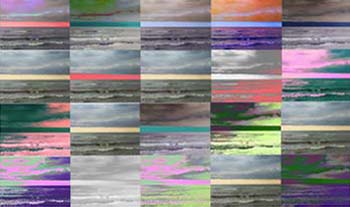
.jpg)
